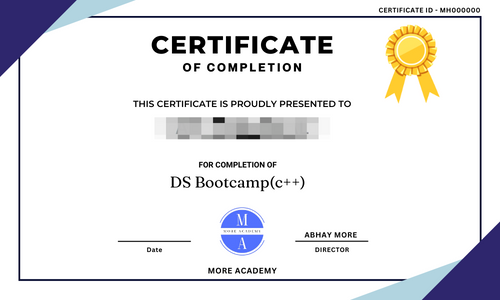

More Academy certificates provide a strong foundation for entering the software development industry, giving you an edge in landing top jobs worldwide. With a **Certification in Data Structures**, you can build a promising career in software engineering, qualifying for roles like **Software Developer, Data Engineer, Algorithm Engineer**, or **Systems Developer**. This certification opens doors to exciting opportunities in tech companies and startups looking for skilled problem-solvers and efficient data handlers.
